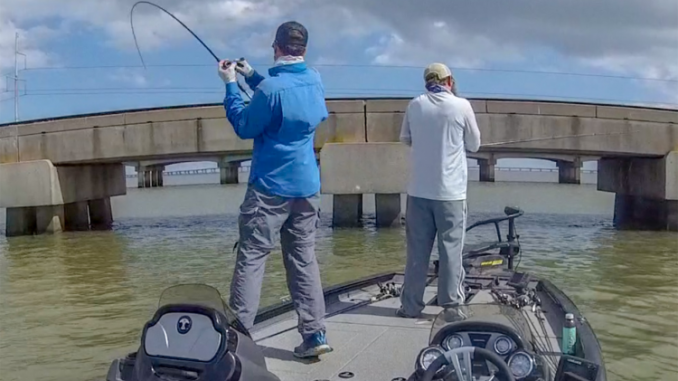
Great advice to put more fish in the boat
Without a doubt, Louisiana has some of the best inshore fishing in the world.
We have so many speckled trout and redfish, spread across so much marsh, that many are hardly pressured at all. And they usually hit so hard that all you have to do is lift up on the rod and start reeling.
They basically hook themselves.
Of course, most are caught in relatively shallow water, making for easy bite-detection because there is little bow in the line.
But not every fishing trip is like this.
When setting the hook counts
Sometimes we fish deeper water, say 15 to 30 feet, where a bite is less discernible due to a wider bow in the line.
And it’s even worse when casting up-current. The bait hits the water, then immediately comes back toward the boat, knocking slack in the line. Trout can hit that lure as hard as they want, and you would never know if there’s 10 feet of slack.
Then there are days fish simply do not commit to the lure, with it going halfway into their mouth before quickly being spit out.
This affords you only a fraction of a second to set the hook, assuming you even felt the bite.
Here are three easy ways to help you detect the bite in time — and get more fish in the boat.
Change rod action
Check the specifications on your rod, and if you see a moderate fast or slow action, then you may want to consider going to fast or even extra-fast.
However, most of us use a fast action for inshore fishing, and I include this tip to eliminate this obvious setback.
Ride the line
Your line is literally a direct connection to the fish, and you can feel it move if you have it going over your finger.
This technique only works with casting tackle, but know that you can hold the line coming off a spinning reel to achieve the same effect — it’s just not as fluid.
Use high-vis line
Fishing line comes in all kinds of colors these days, giving us inshore anglers a wide selection to choose from for differing applications.
One is fluorescent fishing line because it is so bright above the water’s surface — making it incredibly easy to see fish bite.
I prefer to use blue or gold fluorescent monofilament for this purpose and, while I am working a lure, pay attention not to my rod tip, but to the spot where the line goes into the water.
The slightest “tick” to the left or right is a dead giveaway that something bit the lure.
In fact, this is hands-down the best way to detect a bite, moreso than riding the line or using a super-sensitive rod.
Lake Pontchartrain’s best anglers use this technique — and you should, too.
What about braid?
Note that I didn’t mention using braid for its sensitivity.
Yes, braid is far more sensitive than monofilament or fluorocarbon, having virtually zero stretch, but I don’t feel that’s a solution for detecting more bites.
Instead, I feel it’s like a band-aid without the above-mentioned knowledge, which would still leave some hits undetected.
I have had much more success by learning and using the three tips mentioned above — especially the last one.
Learn how to do that, with or without braid, and you’ll find yourself catching far more fish, and you might even gain legendary status with your friends as the angler who can pull fish out of one spot when others can’t.
Tight lines, y’all.
Editor’s Note: Devin Denman is an avid inshore fisherman who writes the Louisiana Fishing Blog. To read more of his articles, visit lafishblog.com.


